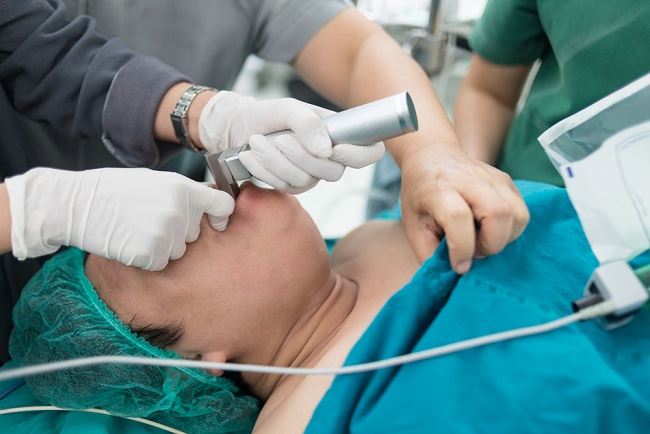Orbital cellulitis is an infection of the tissue in the eye socket caused by bacteria or fungi. This condition is more common in children thanadults.
Orbital cellulitis in children aged 9 years and under is usually caused by one type of bacteria. On the other hand, in adults, orbital cellulitis can be caused by more than one type of bacteria, making it more difficult to treat.

Orbital cellulitis is an emergency that must be treated immediately. Patients with this condition must undergo inpatient treatment.
Causes of Orbital Cellulitis
Orbital cellulitis is caused by a bacterial or fungal infection. In the majority of cases, the disease is caused by a bacterial infection Staphylococcus aureus and group bacteria Streptococcus.
Based on research, almost all cases of orbital cellulitis occur due to complications of sinusitis. The infection then spreads to the orbital septum, the membrane that separates the eyelid from the inside of the eye.
In some cases, orbital cellulitis can also result from a bacterial infection in other parts of the body that spreads to the eye, such as a tooth abscess.
Orbital cellulitis risk factors
In addition to sinus infections, orbital cellulitis is more at risk for someone who has the following conditions or diseases:
- Injury to the eye
- Infection on the inside of the tooth
- Skin infections on the face or around the eyes
- Just had eye surgery
Symptoms of Orbital Cellulitis
Symptoms of orbital cellulitis in children and adults are generally the same. However, the symptoms that arise in children are often more severe than the symptoms in adults.
In general, the symptoms of orbital cellulitis are as follows:
- Swelling around the eyes
- Pain in the eyes and around the eyes
- Pain when moving eyes
- Red eye
- Difficulty opening eyes
- Discharge from the eyes or nose
- Headache
- High fever
- Double vision
- Blind
When to go to the doctor
Do not delay to see a doctor if the symptoms of orbital cellulitis as mentioned above appear. If not treated immediately, the infection can spread quickly and cause serious complications.
Diagnosis of Orbital Cellulitis
The doctor will ask about the symptoms experienced by the patient and continue with an eye examination. After that, the doctor will perform additional examinations in the form of:
- Blood test, to detect the presence or absence of infection
- Culture of eye and nasal fluid, to determine the type of bacteria that causes orbital cellulitis
- CT scan of the eye, to see any swelling, collection of pus, or tears in the eye
- MRI of the eye, to check for possible infection or blood clots in the eye
Orbital Cellulitis Treatment
Patients with orbital cellulitis must be hospitalized. The method of treatment that the doctor prescribes depends on the patient's condition. Some of the treatments that are generally carried out are:
Administration of drugsantibiotics
To overcome the infection and prevent the spread of infection, the doctor will give antibiotics in the form of injections through a vein. The antibiotics given are broad-spectrum antibiotics, namely antibiotics that can kill many types of bacteria.
Injectable antibiotics will be given for 1-2 weeks. After that, the doctor will give antibiotics to drink for 2-3 weeks until the symptoms completely subside.
Operation
If the antibiotics given are still not able to relieve symptoms, the doctor will perform surgery or surgery, namely to remove fluid or abscesses from infected sinuses or eye sockets.
Complications of Orbital Cellulitis
If not treated quickly, orbital cellulitis can lead to serious complications including:
- Blockage of blood flow to the retina
- Blood clots in the cavity behind the eye
- bloodstream infection
- Meningitis
- Hearing loss or deafness
- Decreased visual acuity
- Blindness
Orbital Cellulitis Prevention
To prevent orbital cellulitis, wear protective eyewear when exercising or doing activities that are prone to injury to the eye.
If you have sinusitis or a tooth abscess, follow the advice and therapy given by your doctor. Undergo treatment until declared cured by the doctor. If there are wounds or infections on the skin of the face and around the eyes, check with a doctor and always keep the eye area clean.









